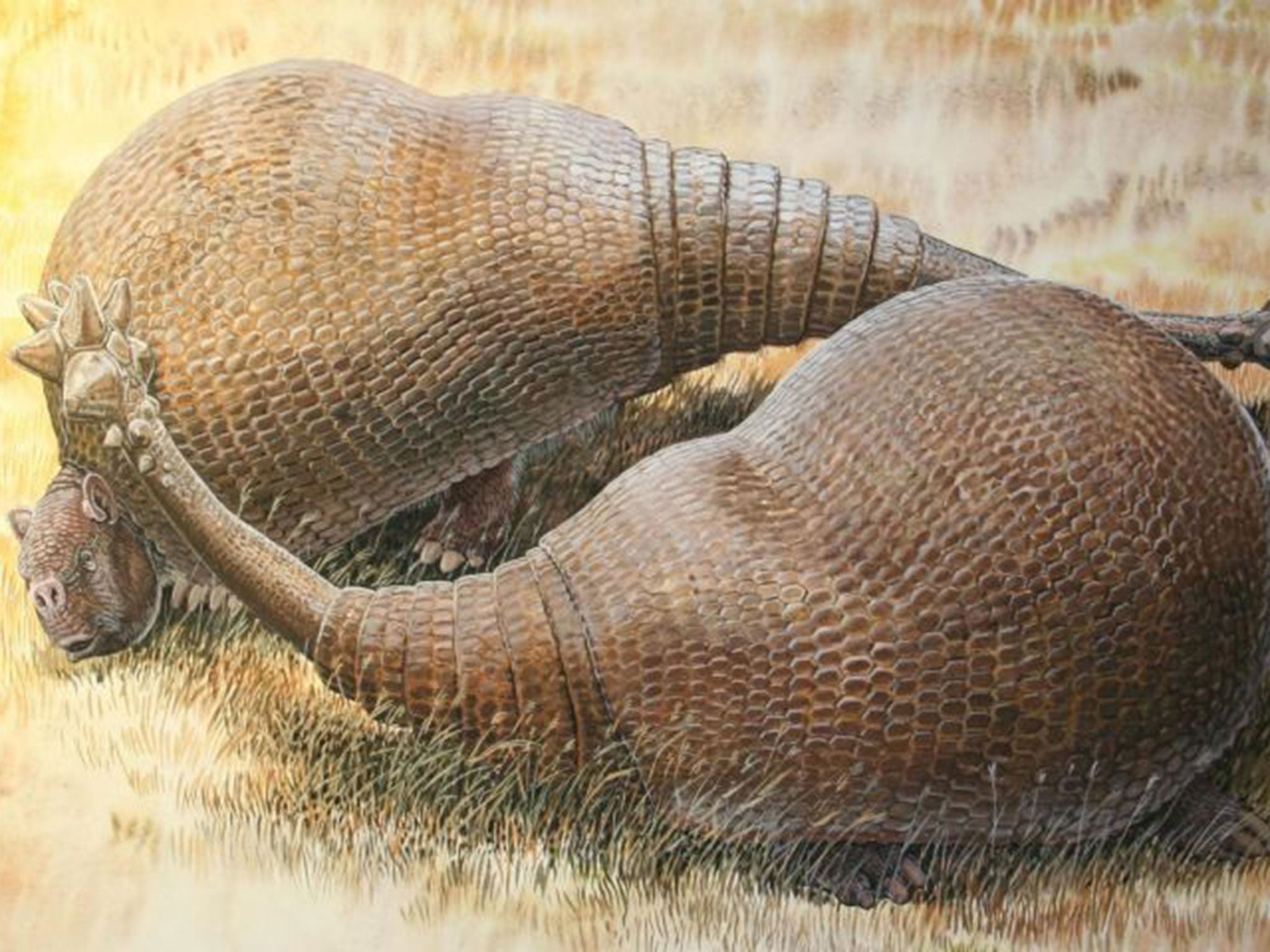Glyptodont: Bizarre giant mammal which roamed South America for millions of years 'related to present-day armadillos'
Glyptodonts were about the size and shape of a VW Beetle, often weighing more than a ton

For millions of years they roamed the open grasslands of what is now South America before they went mysteriously extinct in the last Ice Age. Now scientists have decoded the genome of a fossilised glyptodont and confirmed that this bizarre mammal was related to present-day armadillos.
Heavily armoured, glyptodonts were about the size and shape of a VW Beetle, often weighing more than a ton. They possessed a heavy club at the end of their tails which they presumably swung at any sexual rivals and potential predators who got too near.
However, unlike the segmented armour of the more placid armadillo, the glyptodont’s armoured “shell” was fused into one giant carapace. Fossilised fragments from one specimen’s armoured plate has now produced enough DNA for scientists to decode the glyptodont’s entire mitochondrial genome – the non-chromosomal DNA inherited solely down the maternal line.
An analysis of the mitochondrial DNA revealed that this unusual mammal, which existed for many millions of years before it went extinct, was closely related to modern-day armadillos, a far smaller creature with a leathery, protective coat.
“Glyptodonts should probably be considered a subfamily of gigantic armadillos. We speculate that the peculiar structure of their unarticulated carapace might have evolved as a response to the functional constraint imposed by the size increase they experienced over time,” said Frederic Delsuc of the National Centre for Scientific Research in France.
'World's biggest dinosaur'
Show all 5The study, published in the journal Current Biology, found that glyptodonts probably separated from the last common ancestor they shared with armadillos about 35 million years ago.
“The data sheds light on the familial relations of an enigmatic creature that has fascinated many but was always shrouded in mystery. Was the glyptodont a gigantic armadillo or weird off-shoot with a fused bony exoskeleton?“ said Hendrik Poinar, an evolutionary geneticist and director of Canada’s McMaster Ancient DNA Centre in Hamilton, Ontario.
“Ancient DNA has the potential to solve a number of questions such as phylogenetic position - or the evolutionary relationship - of extinct mammals, but it is often extremely difficult to obtain usable DNA from fossil specimens. In this particular case, we used a technical trick to fish out DNA fragments and reconstruct the mitochondrial genome,” Dr Poinar said.
Subscribe to Independent Premium to bookmark this article
Want to bookmark your favourite articles and stories to read or reference later? Start your Independent Premium subscription today.

Join our commenting forum
Join thought-provoking conversations, follow other Independent readers and see their replies